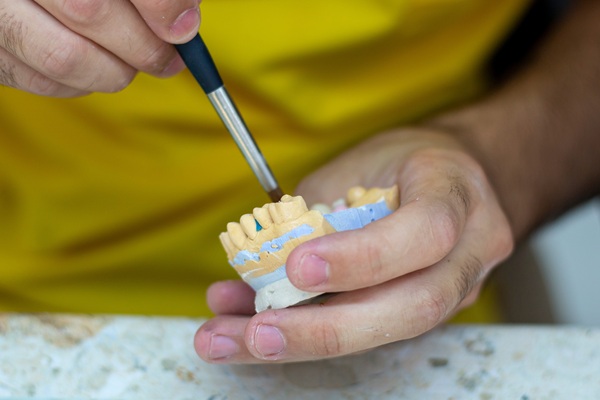Teeth Straightening Options from Your Dentist

Teeth straightening, the main objective of orthodontics, is a treatment to correct crowded or crooked teeth to enhance their function and look. In the past, the only option for teeth straightening involved fitting metal braces onto the teeth to shift them slowly to their proper position. This treatment is handled by a dentist who specializes in straightening teeth.
Orthodontics has evolved from the old days of unsightly metal bands and headgears. Newer teeth straightening options are built to be less obtrusive and effective as possible. This allows patients to live normally and confidently. This article focuses on different teeth straightening options from your dentist.
Traditional Orthodontics
Traditional orthodontics use braces and retainers to straighten the teeth. Braces have been in use for decades and are effective for straightening the teeth, enhancing teeth function and improving the smile’s aesthetic appeal. However, the drawback of braces is their striking appearance and the inconvenience many patients experience during treatment.
There are clear, tooth-colored braces available to make braces less obvious. But, patients have to decide if they are willing to cope with wires and brackets throughout treatment, which could be months or years. Patients who opt for traditional braces have to abide by the special care rules and diet options. Doing so helps prevent damages to the braces and ensure a successful outcome.
Invisalign
For patients who want to straighten their teeth without enduring the inconvenience and conspicuousness of regular braces, Invisalign is another effective alternative. They are also effective for shifting the teeth into the correct position, but with added comfort and ease because they are not bonded to the teeth. Invisalign is removable for eating, brushing and flossing.
The added benefit of these aligners is that they fit perfectly on the teeth and are mostly hidden from the naked eye. Patients are usually required to wear the orthodontic device for at least 22 hours per day to make the treatment effective.
ClearCorrect
This is a clear aligner device that works similarly to other transparent aligners. It corrects the teeth’s position using a set of transparent, custom-made, removable aligners that slowly move the teeth one little step at a time. This eventually fixes the teeth and smile with a new, appealing look.
ClearCorrect always stays on, except while drinking, eating, brushing and flossing. This device is built to be less conspicuous without interfering with your daily routine.
Fastbraces
The objective of Fastbraces is to shift the crown of the tooth and its root concurrently. The process uses both force and flexibility to this end and achieves teeth straightening with elbow-shaped brackets. Unlike the square brackets of traditional braces, Fastbraces technology uses the combination of elbow-shaped brackets and elevated slots to make the wire more flexible.
Fastbraces are significantly more effective and faster than traditional braces, which makes it possible to complete the treatment in as short as a few months.
In conclusion
During your initial consultation, the dentist will discuss the various teeth straightening options with you. They will help you choose the most effective option, depending on the condition of your dentition.
Request an appointment here: https://www.lilburnfamilydentistry.com or call Lilburn Family Dentistry at (770) 800-0178 for an appointment in our Lilburn office.
Check out what others are saying about our services on Yelp: Read our Yelp reviews.
Recent Posts
Dental crowns reinforce a decayed or damaged tooth, restoring its function and beauty. These are just two of the many benefits of crowns. For instance, they also require minimal aftercare. If you are dealing with a broken or root canal-treated tooth, consider this popular dental restoration.Dental crowns can restore a variety of dental conditions. They…
Dental implant restorations have transformed dentistry by offering a versatile and reliable solution for replacing missing teeth. This approach to smile restoration seamlessly combines durability and natural aesthetics, restoring oral function and appearance. Because implant restorations can support different types of dental prosthetics, they address a variety of needs while preserving oral health. Understanding the…
Dental crowns are restorations that can address a range of dental issues, from severely damaged teeth to protecting a tooth after a root canal. They help preserve oral health and enhance a smile's appearance. In addition to being versatile, they are available in different materials, which can be helpful for individuals who want options.Dental crowns…
A broken tooth is a common dental issue that can happen for many reasons, such as accidents, biting into something hard, or untreated tooth decay. Whether a dentist can save a broken tooth or needs to remove it depends on how severe the damage is and how quickly patients seek treatment. While modern dental techniques…


